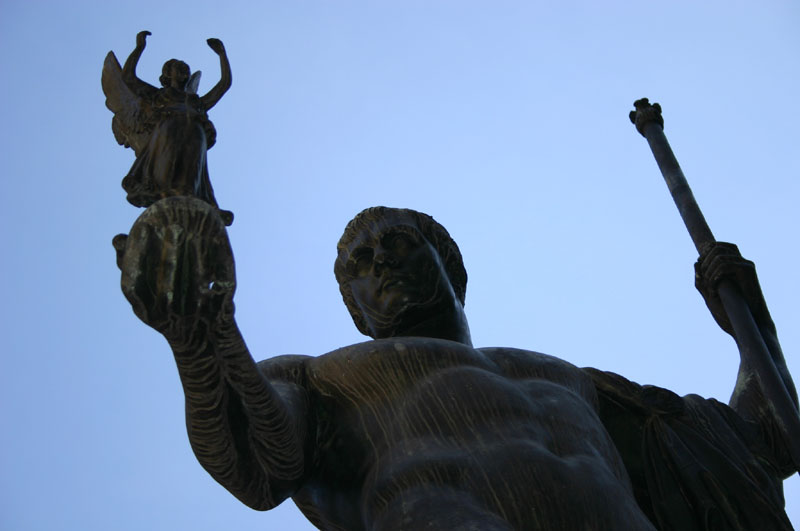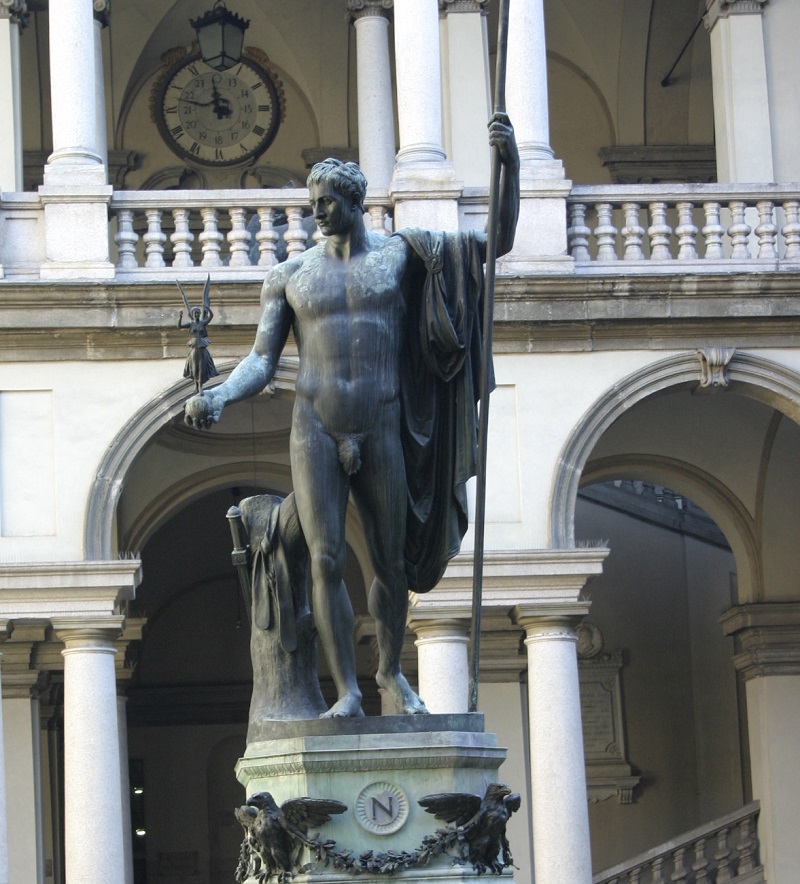
How does a work of art bear witness to history and at the same time become the subject of controversy? In this post I want to explore with you the fascinating journey that the statue of Napoleon in Brera has taken, a bronze sculpture that is emblematic of an era but has also been the subject of heated debate.
The statue, three metres high and created by one of the most famous Italian sculptors of the 19th century, has experienced incredible adventures from its creation to the present day. Its story is the perfect example of how art intertwines with politics, culture, reflecting the changes of an era.
The statue of Napoleon at Brera

The monumental statute of Napoleon in Brera was created at the behest of Eugene de Beauharnais, Viceroy of Italy.
The commission was entrusted to Antonio Canova in 1807, who had been prized for the creation of another identical sculpture of Napoleon in marble, which he found in Canova’s studio in Rome, in which Napoleon was depicted as Mars the peacemaker.
When the finished statue arrived in Milan in 1812, it remained at the Brera Academy of Fine Arts for a long time, waiting for a definitive location.
CONTROVERSY AND LOCATION OF THE STATUE OF NAPOLEON
Despite the beauty of the work, the statue of Napoleon caused some perplexity as the Emperor was naked and such a representation was considered unsuitable for Milan’s public spaces.
Napoleon himself was not happy, preferring to be represented in contemporary garb rather than in the heroic nudity typical of ancient representations. Moreover, he had not liked the previous marble statue either.
For this reason, the decision as to where the statue should be placed was a long one and created heated debate.
Only in 1859, after the liberation of Milan in the Second War of Independence, did the statue of Napoleon find its place in the centre of the courtyard of honour of the Brera Palace.
CURIOSITIES ABOUT NAPOLEON AT BRERA
The bronze that Canova used to make the statue came from disused cannons in Castel Sant’Angelo.
The first plinth of the Napoleon at Brera was made of wood. Only in 1865 was it replaced with a granite plinth, completed with bronze festoons.
One of the plaster casts derived from the original marble statue was used to make the bronze statue, which is now in the Brera. The marble statue, on the other hand, was given to the Louvre Museum and later purchased by the British government, who turned it into a war trophy.
THE RESTORATION OF THE STATUE OF NAPOLEON
The last restoration of the Statue of Napoleon dates back to 2013.
The work was carried out by the Soprintendenza per i beni Storici Artistici e Etnoantropologici di Milano and the Associazione Amici di Brera e dei Musei Milanesi and supported by the Bank of America Merrill Lynch 2013 Art Conservation Project, which helps non-profit institutions dedicated to the conservation of significant works of cultural and artistic heritage.

The Napoleon in Brera is not only a masterpiece but also a symbol of the historical and cultural changes that have taken place in the meantime.
The debate on whether it should be exhibited to the public and where it should be placed tells a complex story between history and art.

